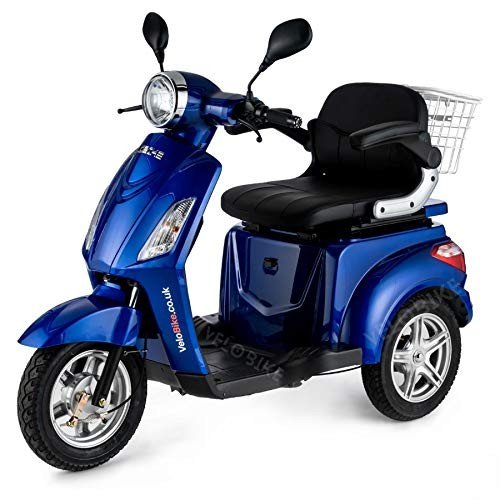10 Meetups About Mobility Scooter You Should Attend

A Comprehensive Guide to Buying a Mobility Scooter
Mobility scooters have ended up being an important tool for numerous people aiming to improve their independence and mobility. With a huge variety of models and functions offered, selecting the right mobility scooter can be daunting. This article provides a helpful guide to help customers browse their alternatives, assess their requirements, and make a notified purchase.
Comprehending Mobility Scooters
Mobility scooters are electric cars developed for individuals who experience mobility obstacles. They are especially beneficial for seniors, those with impairments, or people recuperating from injuries. Mobility scooters can differ widely in terms of design, features, and pricing.
Kinds Of Mobility Scooters
Before starting a purchase, it's important to understand the various types of mobility scooters available:
Three-Wheel Scooters:
- Generally more maneuverable in tight spaces
- Lightweight and portable
- Perfect for indoor use
Four-Wheel Scooters:
- Offer higher stability and balance
- Appropriate for outside use over different surfaces
- Generally have a longer battery life
Foldable/Portable Scooters:
- Designed to be quickly transported and stored
- Can frequently suit the trunk of a cars and truck
- Suitable for those who take a trip frequently
Durable Scooters:
- Built to accommodate larger individuals
- Typically come with more robust features for outside usage
- Usually geared up with bigger batteries for extended variety
Elements to Consider When Buying a Mobility Scooter
1. Weight Capacity
Pick a mobility scooter that can support the user's weight. home-page have a weight limit varying from 250 to 500 pounds. It is crucial to guarantee that the scooter can accommodate the user conveniently.
2. Range and Battery Life
The variety is how far the mobility scooter can travel on a single charge. Typical varieties vary between 10 to 30 miles. Think about the user's day-to-day activities and select a scooter with a suitable range.
3. Scooter Dimensions
Think about the size of the scooter, including its weight and dimensions. A more compact scooter might be ideal for narrow hallways and tight spaces, while bigger models provide extra stability and comfort.
4. Surface Capability
Examine where the scooter will primarily be utilized. If the user plans to travel primarily on pavement, a lightweight design may suffice. However, if the user needs to traverse gravel or irregular surfaces, think about a four-wheel scooter constructed for off-road usage.
Top Features to Look For
Convenience
- Adjustable Seats: Look for scooters with cushioned and height-adjustable seats to make sure comfort throughout travel.
- Armrests: These boost safety and support while navigating.
Security and Visibility
- Headlights and Taillights: Essential for nighttime usage.
- Turn Signals and Reflectors: Improve visibility and safety while on the road.
User-Friendly Controls
- Joystick or Drive Controls: These should be instinctive and easy to manipulate.
- Easy-to-Read Displays: A control panel that shows battery life, speed, and range can boost the user experience.
Additional Features
- Storage Compartments: These provide added benefit for carrying personal items while on the go.
- Weather Protection: Consider designs with rain covers or windscreens if utilized in variable climate condition.
Cost Considerations
When budgeting for a mobility scooter, costs can vary anywhere from ₤ 500 to over ₤ 5,000 depending on the model, functions, and brand. Additional costs may consist of:
- Extended Warranty: Protects against flaws and can conserve money in the long run.
- Accessories: Optional functions, such as updated seats, lights, or storage solutions.
| Feature | Expense Range |
|---|---|
| Standard Models | ₤ 500 - ₤ 1,500 |
| Mid-Range Models | ₤ 1,500 - ₤ 3,000 |
| High-End Models | ₤ 3,000 - ₤ 5,000 |
Financing Options
Lots of merchants offer funding plans, and some local federal government initiatives may supply grants or assistance for those in requirement. Examine prospective financial support with neighborhood resources or mobility service organizations.
FAQs about Buying a Mobility Scooter
What is the difference between a mobility scooter and a wheelchair?
Mobility scooters are motorized and allow users to navigate separately, while wheelchairs might require physical assistance or manual operation.
How do I keep a mobility scooter?
Routine upkeep involves inspecting battery life, cleaning the scooter, and inspecting tires and brakes. Always refer to the user manual for specific guidelines.
Can mobility scooters be utilized inside your home?
Yes, lots of designs are developed for both indoor and outside use. However, three-wheel scooters tend to be much better suited for indoor navigation due to their tighter turning radius.
Are mobility scooters covered by insurance?
Some insurance prepares cover a part of the expenses for mobility scooters if they are deemed clinically essential. Contact your company for particular information.
How fast can a mobility scooter go?
The majority of mobility scooters have an optimal speed ranging from 4 to 8 miles per hour. Nevertheless, the appropriate pace might differ depending upon local regulations.
Buying a mobility scooter can substantially improve one's self-reliance and quality of life. By comprehending the types, features, and costs associated with mobility scooters, potential purchasers can make knowledgeable decisions that suit their needs and choices. Customization and extensive research are essential to ensuring fulfillment with this important investment.

